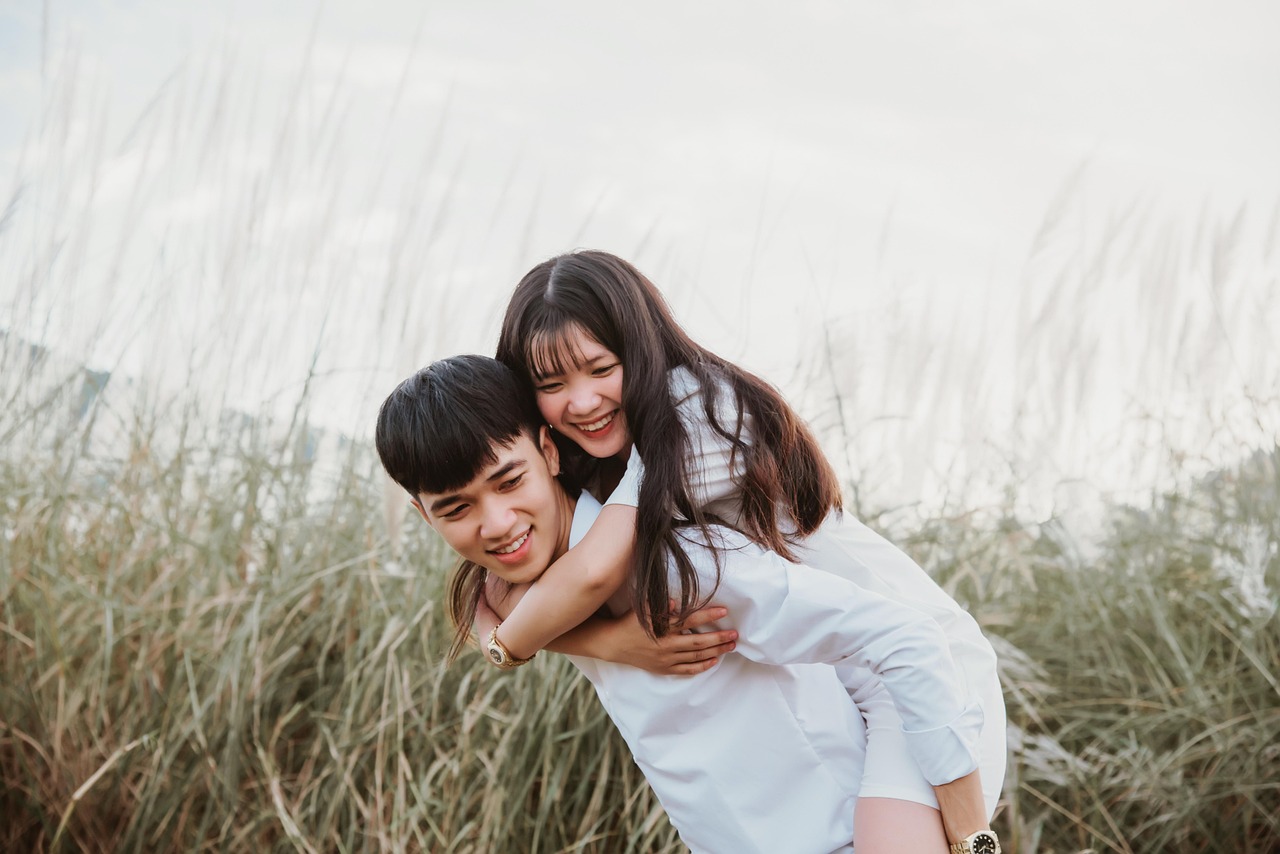This article delves into the significance of Asian massages within the realm of holistic therapy, emphasizing their numerous benefits, diverse techniques, and their integration into contemporary wellness practices. These ancient methods not only enhance physical health but also contribute significantly to mental well-being.
Understanding Holistic Therapy
Holistic therapy is centered around treating the whole person—body, mind, and spirit. This comprehensive approach recognizes that physical ailments often have emotional or spiritual roots. Asian massages, with their rich traditions, fit seamlessly into this framework, offering benefits that extend beyond mere physical relief.
Types of Asian Massages
- Shiatsu: This Japanese healing art utilizes finger pressure on specific points to promote energy flow.
- Thai Massage: Combining acupressure and yoga, Thai massage enhances flexibility and relaxation.
- Tui Na: A form of Chinese therapeutic massage, Tui Na focuses on balancing the body’s energy.
The Role of Acupressure in Asian Massages
Acupressure is pivotal in many Asian massage techniques, applying pressure to specific points to alleviate pain and promote wellness. Understanding these acupressure points can significantly enhance the effectiveness of treatments.
Benefits of Asian Massages for Mental Health
Asian massages provide not only physical relief but also substantial benefits for mental health. Techniques aimed at stress relief can lead to reduced anxiety, improved mood, and greater mindfulness. By encouraging present-moment awareness, these therapies can foster emotional balance.
Choosing the Right Asian Massage for You
Selecting the appropriate type of Asian massage can be daunting. It’s essential to consider personal needs, preferences, and health objectives. Consulting with a qualified practitioner can help in making an informed choice, ensuring that the selected massage aligns with individual wellness goals.
In summary, Asian massages play a crucial role in holistic therapy, offering a multifaceted approach to health that nurtures both body and mind.
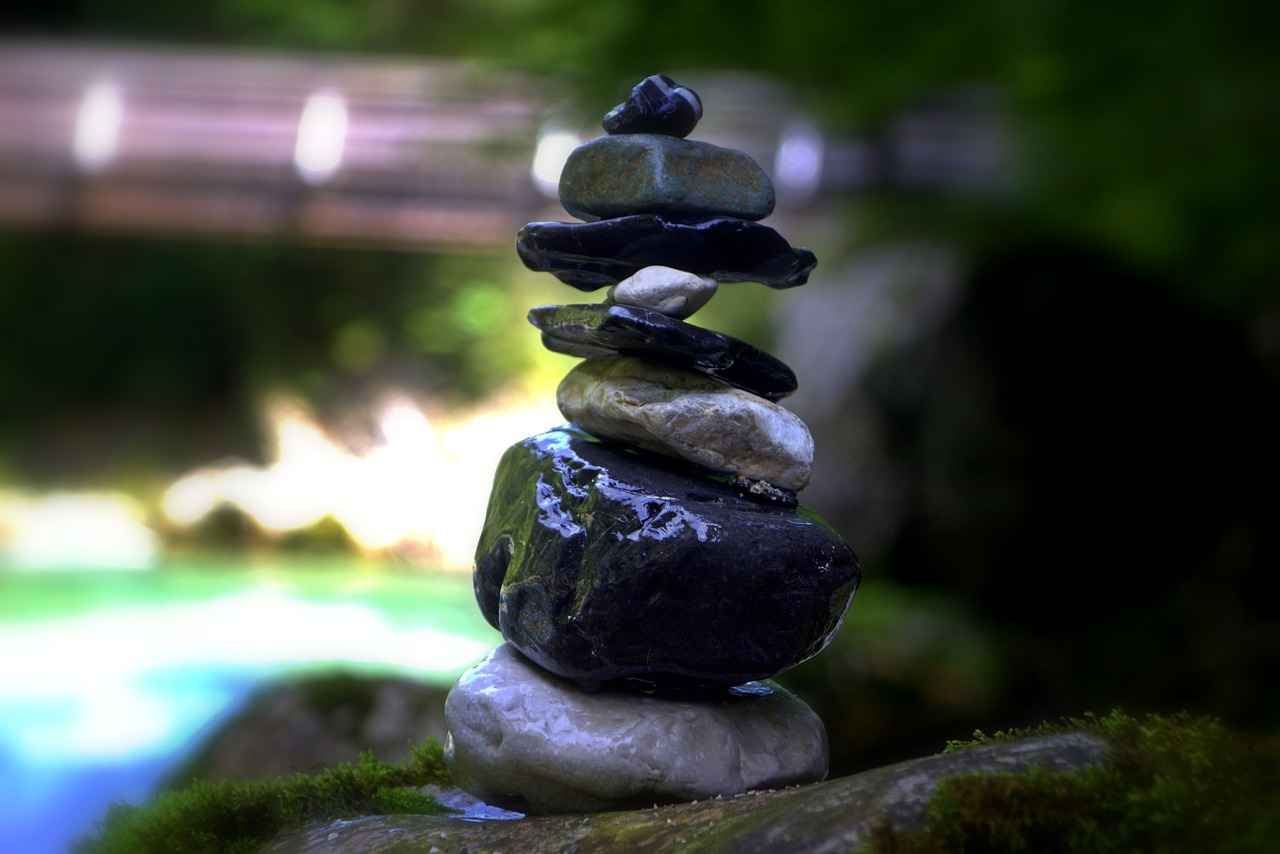
Understanding Holistic Therapy
is essential for anyone interested in a comprehensive approach to health and wellness. Holistic therapy focuses on treating the whole person—body, mind, and spirit. Unlike conventional methods that often isolate symptoms, holistic therapy seeks to address the underlying causes of issues, promoting overall well-being.
The principles of holistic therapy are grounded in the belief that all aspects of a person are interconnected. This means that emotional and mental health can significantly impact physical health and vice versa. By acknowledging this connection, practitioners can create personalized treatment plans that cater to the unique needs of each individual.
One of the primary benefits of holistic therapy is its ability to foster self-awareness. Clients learn to recognize their emotional and physical states, leading to better coping strategies and improved health outcomes. Additionally, holistic practices often emphasize natural healing, utilizing techniques such as meditation, yoga, and massage to promote relaxation and reduce stress.
Asian massages play a significant role in this holistic approach. Techniques such as Shiatsu, Thai massage, and Tui Na are not only therapeutic but also align with the principles of holistic therapy. These massages focus on energy flow and the balance of the body’s systems, enhancing both physical and mental health.
- Shiatsu: Utilizes finger pressure on specific points to relieve tension and promote energy flow.
- Thai Massage: Combines acupressure and yoga-like stretches to enhance flexibility and relaxation.
- Tui Na: A Chinese therapeutic massage that addresses both muscle and emotional issues.
Incorporating Asian massages into holistic therapy can lead to profound benefits. Clients often report reduced anxiety, improved mood, and a greater sense of mindfulness. By treating the whole person, holistic therapy, complemented by Asian massage techniques, creates a pathway to enhanced health and wellness.
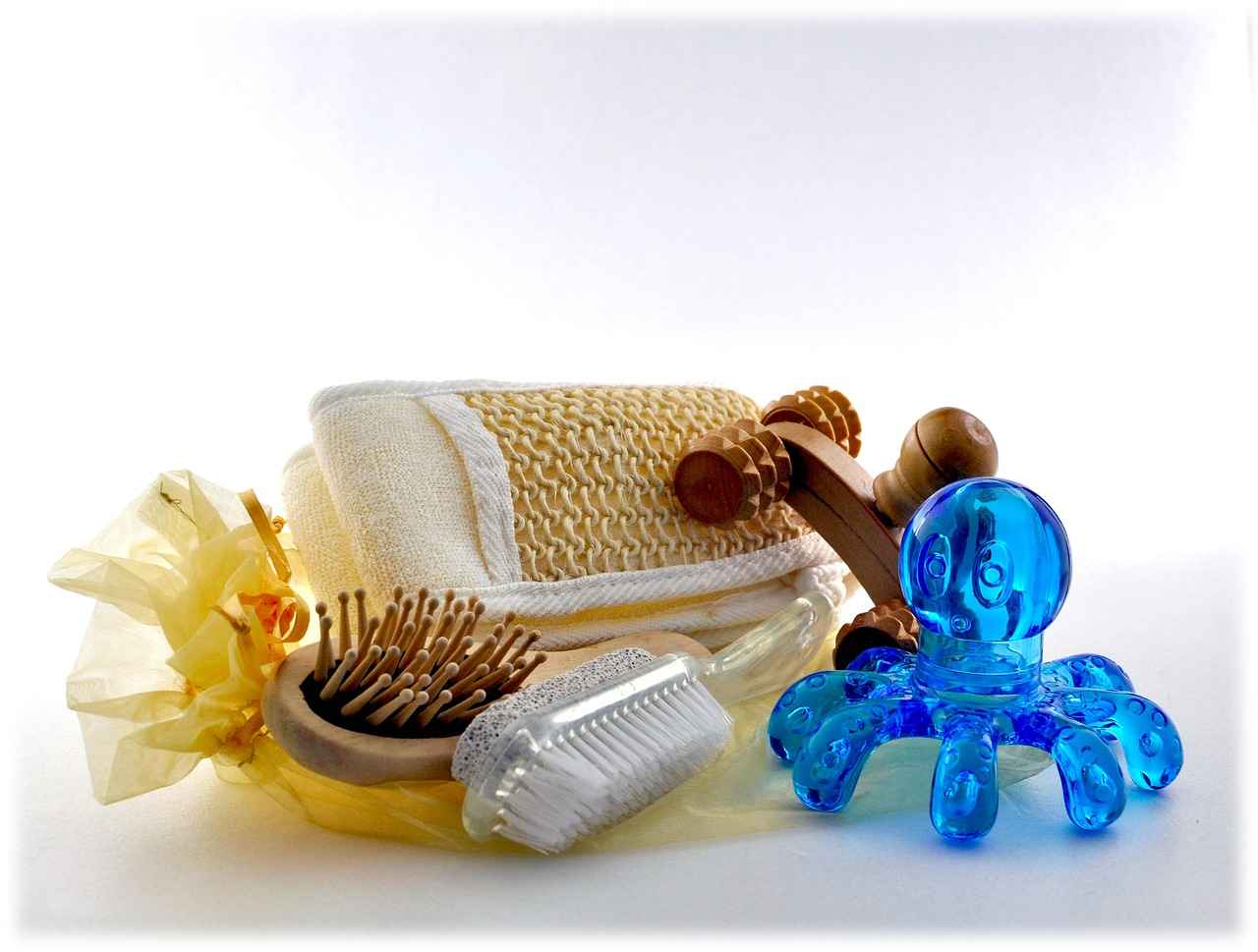
Types of Asian Massages
Asian massages are renowned for their diverse techniques, each offering unique benefits that cater to various physical and mental health needs. This section will explore some of the most popular types of Asian massages, including Shiatsu, Thai, and Tui Na, elucidating their distinct philosophies and methods.
Shiatsu is a traditional Japanese massage that draws heavily from the principles of Chinese medicine. It focuses on the body’s energy pathways, or meridians, and employs finger pressure on specific points. This technique not only helps in relieving muscle tension but also promotes overall wellness by enhancing energy flow. Shiatsu practitioners often emphasize a holistic approach, ensuring that both physical and emotional aspects of health are addressed.
Thai massage, on the other hand, is a dynamic practice that combines acupressure, yoga-like stretching, and energy work. It is often referred to as “lazy yoga” because the therapist guides the recipient through a series of stretches while applying pressure to specific points. This method not only improves flexibility but also aids in relieving stress and tension, making it a favorite among individuals seeking both relaxation and rejuvenation.
Tui Na is a Chinese therapeutic massage that integrates various techniques, including kneading, rolling, and pressing. This form of massage is often used in conjunction with acupuncture and herbal medicine to treat specific ailments. Tui Na focuses on balancing the body’s energy and is particularly effective for musculoskeletal issues, providing both immediate relief and long-term benefits.
Each of these massage techniques embodies a unique philosophy and approach to healing, making them valuable tools in the realm of holistic therapy. By understanding the distinct benefits and methods of Shiatsu, Thai, and Tui Na, individuals can make informed choices about which type of massage best suits their personal wellness goals.
Shiatsu: The Japanese Healing Art
Shiatsu is a unique form of Japanese massage that draws its principles from traditional Chinese medicine. This holistic therapy focuses on the body’s energy flow, known as Qi, utilizing a variety of techniques to promote relaxation and well-being. In this section, we will delve deeper into the techniques used in Shiatsu, its numerous benefits, and how it effectively enhances energy flow.
Simplistically, Shiatsu involves applying finger pressure on specific points throughout the body, similar to acupuncture but without needles. The techniques can be broadly categorized into:
- Palming: Using the palms to apply broad pressure to larger areas.
- Thumb Pressure: Concentrated pressure applied with the thumbs on specific acupressure points.
- Stretching: Gentle stretching of muscles to enhance flexibility.
- Rotational Movements: Circular motions that help release tension.
These techniques not only relieve muscle tension but also stimulate the body’s natural healing processes, leading to improved circulation and overall health.
The health benefits of Shiatsu are extensive and well-documented. Some of the most notable benefits include:
- Stress Reduction: Shiatsu promotes deep relaxation, effectively reducing stress levels.
- Improved Circulation: The pressure applied during the massage enhances blood flow, delivering oxygen and nutrients to cells.
- Enhanced Flexibility: The stretching techniques improve joint mobility and flexibility.
- Relief from Pain: Shiatsu can alleviate chronic pain conditions, such as back pain and headaches.
Scientific studies have shown that regular Shiatsu sessions can lead to significant improvements in both physical and mental health, making it a valuable addition to any wellness routine.
In conclusion, Shiatsu stands out as a powerful tool for enhancing overall health and wellness. By integrating its techniques into your self-care regimen, you can experience profound benefits that support both body and mind.
Techniques Used in Shiatsu
Shiatsu is a unique form of massage that employs targeted finger pressure on specific points of the body, drawing from the principles of traditional Chinese medicine. This therapeutic technique is not just about relaxation; it encompasses a range of methods designed to promote physical and emotional well-being. In this section, we will explore the various techniques used in Shiatsu and their physiological effects on the body.
Shiatsu practitioners utilize a variety of techniques, each aimed at enhancing the flow of energy—or “Qi”—throughout the body. Some of the primary techniques include:
- Palming: This technique involves using the palms to apply pressure on larger areas of the body, helping to relax muscles and stimulate circulation.
- Thumb Pressure: Practitioners often use their thumbs to target specific acupressure points, which can alleviate tension and promote healing.
- Stretching: Shiatsu incorporates gentle stretching movements to enhance flexibility and release tightness in the muscles.
- Rotational Movements: These movements help to stimulate the joints and improve overall mobility.
- Joint Manipulation: This technique involves careful manipulation of joints to enhance range of motion and relieve discomfort.
The physiological effects of these techniques are profound. By applying pressure to specific points, Shiatsu can:
- Enhance Circulation: Improved blood flow can lead to better oxygenation of tissues and faster recovery from injuries.
- Reduce Muscle Tension: Targeted pressure helps to release knots and tightness in muscles, leading to greater relaxation.
- Boost Immune Function: Regular Shiatsu sessions can strengthen the immune system, making the body more resilient to illness.
- Promote Emotional Balance: The calming effects of Shiatsu can reduce anxiety and enhance overall emotional well-being.
In summary, the techniques used in Shiatsu not only alleviate physical tension but also foster a sense of holistic wellness. By integrating these methods into a regular wellness routine, individuals can experience significant improvements in both their physical health and emotional state.
Health Benefits of Shiatsu
Spa enthusiasts and wellness seekers alike have turned to Shiatsu, a traditional Japanese massage technique, for its myriad of health benefits. Among the most notable are stress reduction and enhanced circulation, both of which are supported by scientific research and personal experiences.
Numerous studies have demonstrated the effectiveness of Shiatsu in promoting relaxation and reducing stress levels. For instance, a study published in the Journal of Alternative and Complementary Medicine found that participants who received regular Shiatsu sessions reported significantly lower levels of anxiety and improved overall well-being. The rhythmic pressure applied during Shiatsu not only alleviates physical tension but also fosters a sense of calm, allowing individuals to unwind and recharge.
In addition to stress relief, Shiatsu has been shown to improve circulation. Research conducted by the International Journal of Therapeutic Massage and Bodywork highlighted that Shiatsu techniques stimulate blood flow, which can lead to enhanced oxygen delivery to tissues and improved nutrient absorption. This is particularly beneficial for individuals with sedentary lifestyles or those recovering from injury, as better circulation can accelerate healing and promote overall vitality.
| Health Benefit | Scientific Support | Personal Testimonials |
|---|---|---|
| Stress Reduction | Journal of Alternative and Complementary Medicine | “After my Shiatsu sessions, I feel more relaxed and centered.” – Jane D. |
| Improved Circulation | International Journal of Therapeutic Massage and Bodywork | “Shiatsu has helped me recover faster from my workouts.” – Mark R. |
Personal testimonials further reinforce these findings. Many individuals report feeling a profound sense of relaxation and relief from chronic pain after regular Shiatsu treatments. Clients often describe the experience as not only physically rejuvenating but also emotionally uplifting, contributing to a greater sense of well-being.
In summary, Shiatsu is more than just a massage; it is a holistic approach to health that encompasses both physical and mental wellness. By integrating Shiatsu into one’s routine, individuals can experience significant improvements in their overall quality of life.
Thai Massage: A Dynamic Approach
Thai massage is a unique therapeutic practice that integrates acupressure, yoga, and energy work to promote overall well-being. Unlike traditional Western massage techniques, Thai massage focuses on the flow of energy throughout the body, utilizing a series of stretches and rhythmic movements to enhance flexibility and relaxation. This holistic approach not only addresses physical tension but also nurtures the mind and spirit.
The techniques employed in Thai massage are distinct and dynamic. Practitioners often use their hands, feet, elbows, and knees to apply pressure on specific points along the body’s energy lines, known as Sen lines. This application of pressure, combined with assisted yoga-like stretches, helps release blockages and restore balance. The experience is often described as a meditative journey, allowing individuals to reconnect with their bodies and deepen their relaxation.
One of the significant benefits of Thai massage is its ability to enhance flexibility. The incorporation of stretching techniques encourages the body to open up, promoting greater range of motion in the joints and muscles. This is particularly beneficial for individuals who may lead sedentary lifestyles or engage in repetitive activities that can lead to stiffness.
Moreover, Thai massage offers profound relaxation benefits. The combination of acupressure and gentle stretching calms the nervous system, reducing stress and anxiety levels. Clients often report feeling a sense of tranquility and mental clarity following a session, making it an excellent choice for those seeking relief from the pressures of daily life.
In summary, Thai massage stands out as a dynamic and holistic therapy that combines ancient techniques with modern wellness practices. Its unique approach to flexibility and relaxation not only supports physical health but also cultivates a deeper connection between body and mind, making it a valuable addition to any wellness routine.

The Role of Acupressure in Asian Massages
Acupressure plays a vital role in the realm of Asian massages, serving as a foundational technique that enhances overall wellness. This ancient practice involves applying pressure to specific points on the body, known as acupressure points, which correspond to various physical and emotional health aspects. By stimulating these points, individuals can experience significant relief from pain and tension, promoting a sense of balance and harmony within the body.
One of the primary benefits of acupressure is its ability to relieve pain. Research has shown that targeting specific acupressure points can effectively reduce discomfort associated with conditions such as headaches, back pain, and even digestive issues. For instance, applying pressure to the LI4 point (located between the thumb and index finger) is renowned for alleviating headaches and stress.
Moreover, acupressure is not solely focused on physical relief; it also plays a significant role in enhancing mental well-being. The practice encourages relaxation and can help mitigate symptoms of anxiety and depression. By promoting the release of endorphins and other feel-good hormones, acupressure fosters a state of calmness and emotional stability.
Incorporating acupressure into Asian massage techniques, such as Shiatsu and Thai massage, allows practitioners to create a holistic experience that addresses both physical and emotional health. These massages often combine acupressure with stretching and rhythmic movements, enhancing the overall therapeutic effect.
For those looking to integrate acupressure into their daily lives, simple techniques can be easily practiced at home. For example, using fingers to apply pressure to key points for just a few minutes each day can significantly enhance well-being and promote relaxation.
In conclusion, the role of acupressure in Asian massages is indispensable. By understanding and utilizing this technique, individuals can unlock profound benefits for both their physical and mental health, leading to a more balanced and fulfilling life.
Acupressure Points and Their Benefits
Understanding acupressure points is essential for maximizing the benefits of Asian massages. Acupressure is a therapeutic technique rooted in traditional Chinese medicine, focusing on the body’s energy pathways or meridians. By applying pressure to specific points, practitioners can stimulate the body’s natural healing processes and promote overall well-being.
Here are some key acupressure points and their associated health benefits:
| Acupressure Point | Location | Health Benefits |
|---|---|---|
| LI4 (Hegu) | Between the thumb and index finger | Relieves headaches, reduces stress, and boosts immunity |
| PC6 (Neiguan) | Inner forearm, about two inches from the wrist | Alleviates nausea, anxiety, and improves heart health |
| ST36 (Zusanli) | Four fingerbreadths below the knee cap | Enhances digestion, boosts energy, and strengthens the immune system |
| SP6 (Sanyinjiao) | Three fingerbreadths above the inner ankle bone | Supports reproductive health, eases menstrual pain, and promotes relaxation |
Research has shown that these acupressure points can significantly enhance the effectiveness of Asian massage techniques. For example, a study published in the Journal of Alternative and Complementary Medicine found that stimulating LI4 can lead to a noticeable reduction in headache intensity. Similarly, PC6 has been widely recognized for its ability to alleviate nausea, making it a popular choice for individuals undergoing various treatments.
Incorporating knowledge of these acupressure points into your massage routine not only enhances the experience but also aligns with the holistic philosophy of treating the body as a whole. By focusing on these specific areas, practitioners can facilitate greater energy flow and promote healing throughout the body.
In summary, understanding acupressure points and their benefits is vital for anyone interested in maximizing the effects of Asian massages. By integrating this knowledge into practice, individuals can experience improved physical and mental well-being.
Integrating Acupressure into Daily Life
Integrating acupressure into daily life can significantly enhance your overall well-being. By incorporating these simple yet effective techniques into your routine, you can promote relaxation, alleviate stress, and improve your physical health. Below are practical tips and methods to utilize acupressure for self-care at home.
- Start with Basic Techniques: Familiarize yourself with some fundamental acupressure points. For example, the LI4 point, located between the thumb and index finger, is known for relieving headaches and stress.
- Set a Regular Schedule: Try to dedicate a few minutes each day to practice acupressure. Consistency is key—whether it’s during your morning routine or before bedtime, find a time that works for you.
- Create a Relaxing Environment: To maximize the benefits of acupressure, ensure you are in a calm and peaceful setting. Dim the lights, play soothing music, or use essential oils to enhance relaxation.
- Use Visual Aids: Consider using diagrams or apps that illustrate acupressure points. Visual aids can help you accurately locate and apply pressure to the right areas.
- Combine with Breathing Exercises: Pair acupressure techniques with deep breathing. Inhale deeply as you apply pressure to a point and exhale slowly to enhance the calming effect.
- Listen to Your Body: Pay attention to how your body responds to acupressure. Adjust the pressure and duration according to your comfort level, ensuring a positive experience.
By incorporating these practical tips into your daily routine, you can harness the power of acupressure to improve your health and well-being. Remember, the goal is to create a personalized self-care practice that suits your lifestyle and needs.
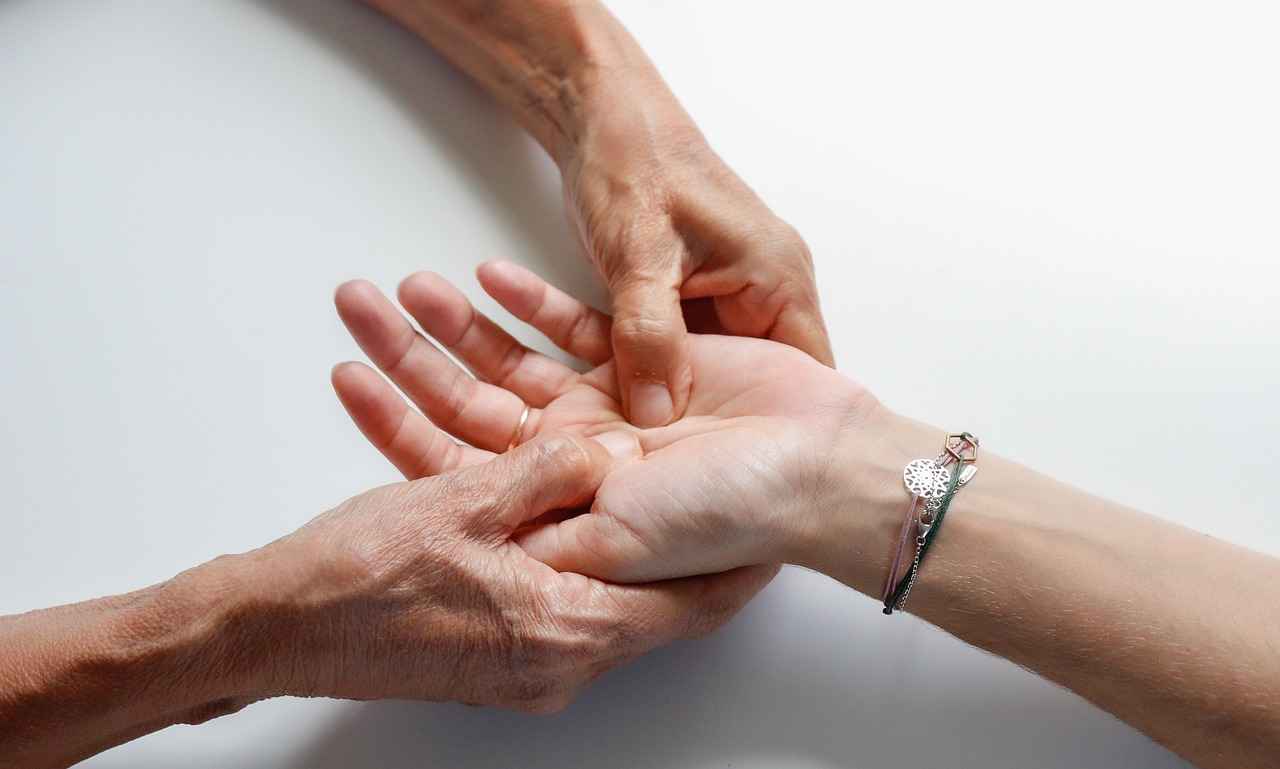
Benefits of Asian Massages for Mental Health
Asian massages have long been celebrated for their physical benefits, but their impact on mental health is equally significant. These therapeutic practices not only alleviate physical discomfort but also play a vital role in enhancing emotional well-being. This section delves into how Asian massages can effectively reduce anxiety, improve mood, and promote mindfulness.
- Reducing Anxiety and Stress: One of the most profound effects of Asian massages is their ability to reduce anxiety. Techniques such as deep tissue manipulation and rhythmic movements stimulate the release of endorphins, the body’s natural stress relievers. Regular sessions can lead to lower cortisol levels, fostering a state of relaxation and calm.
- Improving Mood: The holistic approach of Asian massages encourages a positive emotional state. By addressing both physical tension and mental stress, these therapies can help uplift mood. The incorporation of soothing music and aromatic oils during the massage can further enhance this effect, creating an environment conducive to emotional healing.
- Promoting Mindfulness: Asian massages encourage practitioners to focus on the present moment. This mindfulness aspect is essential for mental clarity and emotional balance. Techniques such as meditation and breathing exercises, often integrated into the massage experience, help individuals cultivate a deeper awareness of their thoughts and feelings, leading to improved mental resilience.
Incorporating Asian massages into a regular wellness routine can significantly enhance mental health. By addressing both the physical and emotional aspects of well-being, these therapies provide a comprehensive approach to achieving a balanced, healthy lifestyle.
Stress Relief and Relaxation Techniques
Stress relief is a fundamental aspect of Asian massages, which are designed to promote relaxation and enhance overall well-being. These ancient practices offer a variety of techniques that not only help to alleviate physical tension but also significantly improve mental health. In this section, we will explore specific methods used in Asian massages that induce relaxation and their profound impact on mental wellness.
- Deep Tissue Techniques: Many Asian massages, such as Shiatsu and Tui Na, focus on deep tissue manipulation. By applying pressure to specific points, these techniques help release muscle tension and improve blood circulation, leading to a state of deep relaxation.
- Breath Control: Incorporating breathing exercises during massage enhances the relaxation experience. Practitioners often guide clients to synchronize their breath with the massage rhythm, promoting mindfulness and reducing anxiety.
- Stretching: Thai massage is renowned for its incorporation of stretching techniques. These stretches not only increase flexibility but also release endorphins, which are natural mood lifters, thus contributing to overall mental well-being.
- Aromatherapy: The use of essential oils during massages can amplify relaxation. Scents like lavender and chamomile are known for their calming properties, helping to soothe the mind and reduce stress levels.
Research has shown that regular engagement in these massage techniques can lead to a significant reduction in anxiety and depression. For instance, a study published in the Journal of Alternative and Complementary Medicine found that participants who received regular Asian massages reported lower stress levels and improved mood. Furthermore, these practices promote a sense of mindfulness, enabling individuals to focus on the present moment and cultivate emotional balance.
Incorporating these stress relief techniques into your wellness routine can lead to a more harmonious life. Whether through self-massage, attending a professional session, or practicing mindfulness, the benefits of Asian massages extend far beyond mere relaxation, positively influencing mental health and emotional resilience.
Enhancing Mindfulness through Massage
In today’s fast-paced world, finding moments of calm and clarity can be a challenge. One effective way to cultivate mindfulness is through the practice of Asian massages. These therapeutic techniques not only focus on physical relaxation but also play a significant role in enhancing present-moment awareness and emotional balance.
Asian massages, such as Spa Therapy, Shiatsu, and Thai massage, are designed to promote a deep connection between the body and mind. By engaging in these practices, individuals can learn to focus on their breathing and bodily sensations, which are key components of mindfulness. This subsection will explore how these therapies encourage a heightened sense of awareness and emotional regulation.
- Present-Moment Awareness: During an Asian massage, practitioners guide clients to concentrate on their physical sensations, such as pressure, warmth, and relaxation. This focus helps divert attention from daily stressors, allowing the mind to settle into the present.
- Emotional Balance: The gentle, rhythmic movements used in Asian massages can help release emotional blockages stored in the body. As tension dissipates, individuals often experience a sense of lightness and emotional clarity.
- Breath Control: Many Asian massage techniques emphasize deep, intentional breathing. This practice not only enhances relaxation but also fosters a deeper connection to one’s feelings and thoughts, promoting emotional stability.
Furthermore, the integration of mindfulness into massage therapy can lead to long-term benefits, such as reduced anxiety and improved overall well-being. By regularly engaging in these practices, individuals can cultivate a more mindful lifestyle, leading to greater peace and resilience in the face of life’s challenges.
In conclusion, Asian massages serve as a powerful tool for enhancing mindfulness. By fostering present-moment awareness and emotional balance, these therapies can significantly contribute to one’s mental and emotional health.
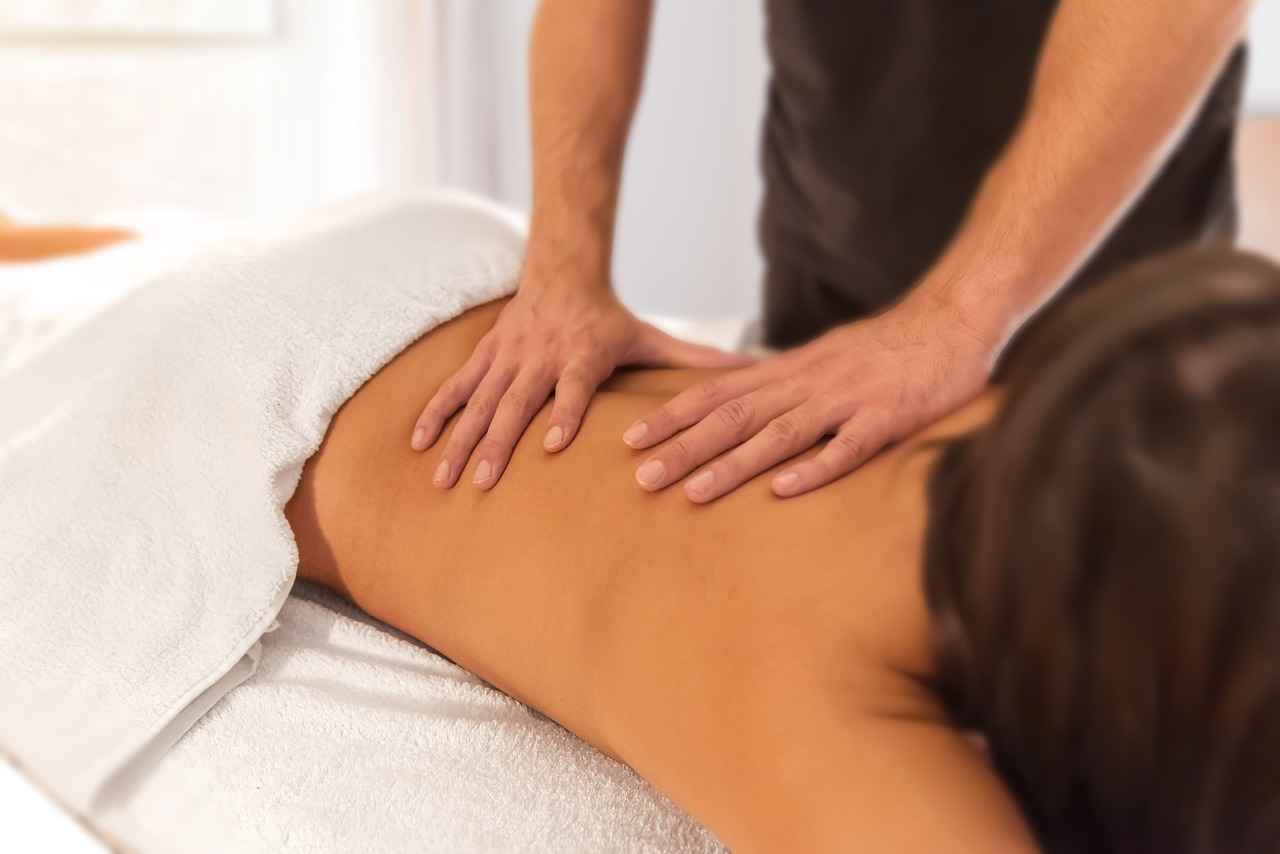
Choosing the Right Asian Massage for You
Choosing the right type of Asian massage can seem overwhelming due to the variety of techniques and philosophies available. Each massage type offers unique benefits tailored to different needs and preferences. Understanding these options is crucial for making an informed decision that aligns with your health goals.
Assessing Your Personal Needs
- Physical Goals: Are you seeking relief from chronic pain, improved flexibility, or relaxation?
- Mental Well-being: Consider if you are looking to reduce stress, anxiety, or enhance overall mood.
- Health Conditions: Identify any specific conditions (e.g., back pain, insomnia) that might influence your choice.
Exploring Different Techniques
Familiarizing yourself with the various types of Asian massages can help narrow down your options:
- Shiatsu: Focuses on pressure points and is excellent for relieving tension and promoting energy flow.
- Thai Massage: Combines stretching and acupressure, ideal for enhancing flexibility and relaxation.
- Tui Na: A Chinese therapeutic massage that targets specific ailments through deep tissue manipulation.
Considering Your Preferences
- Comfort Level: Some individuals prefer gentle techniques, while others may benefit from deeper pressure.
- Environment: Consider whether you prefer a tranquil spa setting or a more clinical environment.
- Practitioner Expertise: Look for a practitioner who specializes in the type of massage you are interested in.
Lastly, it’s essential to listen to your body and trust your instincts. Each experience is unique, and what works for one person may not work for another. By taking the time to evaluate your needs, preferences, and the various techniques available, you can select the most suitable Asian massage to enhance your physical and mental well-being.
Frequently Asked Questions
- What are the primary benefits of Asian massages?
Asian massages offer a multitude of benefits, including stress relief, improved circulation, and enhanced flexibility. These therapies also promote mental well-being by reducing anxiety and improving mood, making them an integral part of holistic health.
- How do I choose the right type of Asian massage for my needs?
Choosing the right Asian massage depends on your personal preferences and health goals. Consider what you want to achieve—whether it’s relaxation, pain relief, or increased flexibility. Research different techniques like Shiatsu or Thai massage to find the one that resonates with you.
- Can I practice acupressure techniques at home?
Absolutely! Many acupressure techniques can be easily integrated into your daily routine. By learning key pressure points, you can perform self-care at home to alleviate tension and promote overall wellness.
- How often should I receive Asian massages?
The frequency of Asian massages depends on individual needs and lifestyle. For general wellness, a monthly session may suffice, while those dealing with specific issues might benefit from weekly treatments. Listen to your body and adjust accordingly!












